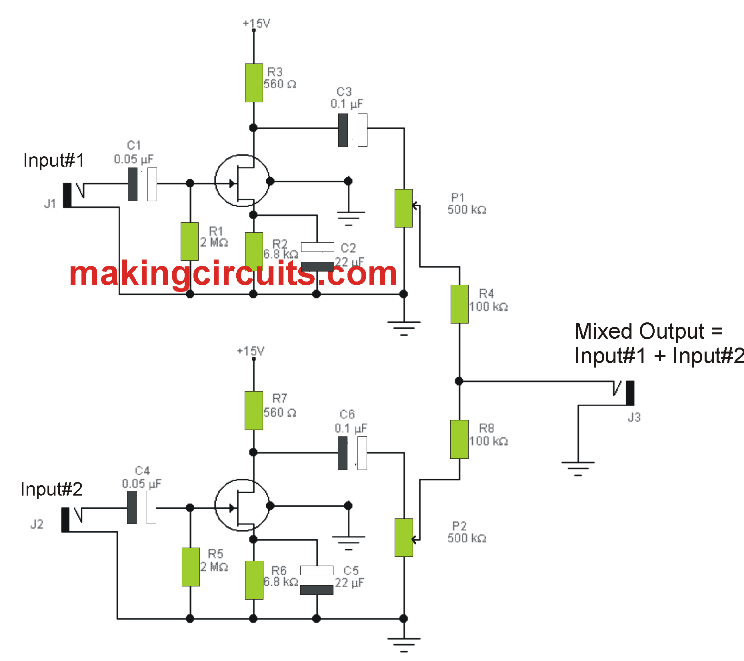Generally devices with a number of mic inputs is employed to create sound mixing through diverse sources. The proposed microphone mixer circuit has just been developed for a couple of microphone inputs. Nevertheless with exactly the same principle and it is possible to extend the amount of entries accessible for mixing. Within this model, both microphone inputs happen to be amplified and filtered prior to mixing the audio. In this manner, the losses associated with each input are reimbursed individually (via P1 and P2), and the noises is substantially minimized.
The utilization of FET transistors, that are known by their high input impedance, permits us to employ these preamplifier circuits with high impedance microphones for example glass and ceramics; using these you are able to achieve frequency response with no attenuation between 1Hz and 20KHz. Through the potentiometers P1 and P2 situated at the output of the preamplifiers, the volume of each of the microphones can be governed separately prior to mixing.
The power consumption of this circuit is very very low, just a few milliamps, and hence it really is well suited for portable equipment which is driven by batteries (for instance with a couple of 9V PP3).
Circuit Diagram

Leave a Reply